Recent Publications
The North Carolina Studies in the Romance Languages and Literatures supports and disseminates scholarship in the Romance literatures. The more than 320 works in the series treat a multitude of topics on French, Italian, Luso-Brazilian, Portuguese, and Spanish literatures. Our books have explored literary movements, individual authors and works, themes, figures of speech and thought, archetypes, poetics, and, on occasion, editions of unpublished literary works.
Recent Publications
Click on a title for purchasing information.
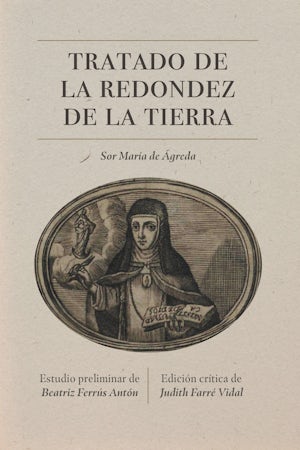
Tratado de la Redondez de la Tierra
By Sor María de Jesús de Ágreda
Esta es la primera edición crítica en español del Tratado sobre la redondez de la Tierra, ensayo cosmológico y geográfico nacido de la “ciencia infusa” (conocimento transmitido por la divinidad), atribuido a Sor María de Jesús de Ágreda (Ágreda, Soria, España, 1602-1665). María Coronel de Arana es posiblemente una de las figuras más misteriosas y controvertidas de la Edad Moderna. No solo como personaje histórico o literario, su vida y su obra reúnen numerosos aspectos aún por descifrar que han dado lugar a una sugerente mitología cultural de dimensión transatlántica, abierta a sumar nuevas interpretaciones y significados.
Figura política, teológica y legendaria, Sor María de Jesús de Ágreda se transforma en un significante cultural que no deja de acumular capas de sentido. Una de ellas, todavía poco explorada, es la atribución del Tratado sobre la redondez de la tierra. Este volumen indaga en las razones para la atribución a Sor María de Jesús, considerando su dimensión de imagen cultural y transoceánica que rebasa la individualidad concreta. Tratamos diferentes aspectos de la vida, la obra, el contexto cultural y la tradición desde la que se la leyó y puede leerse también en el siglo XXI. El Tratado se enmarca en el espacio de producción cultural femenina conventual, sin el que no puede entenderse la figura de la autora, ni la escritura de mujeres en la época, no solo observando los géneros más conocidos del convento, sino una tradición todavía por recuperar: la del conocimiento científico, que, aunque presente entre sus muros, apenas ha recibido atención crítica.

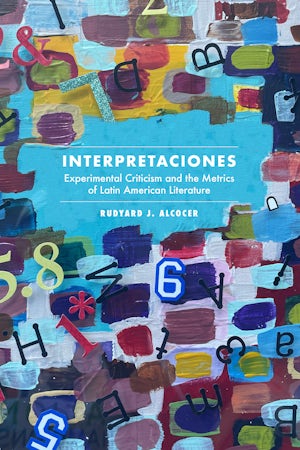
By Rudyard J. Alcocer
Interpretaciones: Experimental Criticism and the Metrics of Latin American Literature examines readers’ reactions to short texts during crucial moments of the reading experience. These readers are students at universities in the US and several Spanish-speaking countries. Far from reducing the reading experience to a series of numbers, the data-driven approaches in the study instead underline the startling complexity and elusiveness of seemingly basic literary processes and concepts, including those pertaining to authorship, titles, conclusions, and so on. Simultaneously, Interpretaciones suggests alternative methodologies for gaining new and unexpected knowledge about literary texts themselves, whether from Latin America or elsewhere. Interpretaciones is an ambitious, interdisciplinary project geared toward those interested in literary theory, Latin American and Caribbean literature, and the nexus between literature and science.

By Gail A. Bulman
Feeling the Gaze: Image and Affect in Contemporary Argentine and Chilean Performance is the first book-length study to explore the connection between visuality and affect in Latin American theater performances. Taking Argentine and Chilean performances as models, Bulman shows how twenty-first century live performances manipulate images on stage to build an affective bond and lasting impression on spectators that sharpens the plays’ socio-historical and political messaging. Through close readings of eight Southern Cone performances originally staged between 2014 and 2019 – many of which have also been performed internationally –, Feeling the Gaze showcases the originality and innovation in Argentine and Chilean theater and contributes to existing scholarship on post-dramatic theater, performance studies, visual studies, cultural studies, affect studies, and world theater. By closely examining props, bodies, costumes, lighting, digital images and embedded screens through theoretical lenses, the book illustrates ways in which the artists’ manipulation of visual elements on stage captivates spectators emotionally and intellectually.


Early Modern Visions of Space: France and Beyond
Edited by Dorothea Heitsch & Jeremie C. Korta
How writers respond to a cosmology in evolution in the sixteenth century and how literature and space implicate each other are the guiding issues of this volume in which sixteen authors explore the topic of space in its multiform incarnations and representations. The volume’s first section features the early modern exploration and codification of urban and rural spaces as well as maritime and industrial expanses: “Space and Territory: Geographies in Texts” thus contributes to a history of spatial consciousness. The construction of local, national, political, public, and private places is highlighted in “Space and Politics: Literary Geographies”; the contributors in this segment show how built forms as architectural or literary constructions and spatial orientation are intertwined. “Space and Gender: Geopoetical Approaches” traces the experience of gender as political, territorial, and communicative exploration; the essays in this division deal with social organization and its symbolic analysis, resulting in literary texts featuring what could be called psychological production theories. The development of ethical approaches adapted to or critical of colonial expansion is analyzed in “Space and Ethics: Geocritical Ventures”; here we encounter early modern globalization where locals, explorers, immigrants, adventurers, and intellectuals remake themselves in new places, engage in or meet with resistance, or attempt to rework local sociopolitical systems while reassessing those they are familiar with. “The Space of the Book, the Book as Space: Printing, Reading, Publishing” analyzes the tactile object of the book as an arena for commerce, politics, and authorial experimentation.


By Felipe Martínez-Pinzón
Patricios en contienda has received an honorable mention from the 2022 Modern Language Publication Awards.
Patricios en contienda explora las maneras en que los cuadros de costumbres fueron usados en Colombia, Ecuador y Venezuela para nacionalizar poblaciones heterogéneas y producir pueblos nacionales para estos tres países tras la disolución de la llamada Gran Colombia (1819-1831). Al situar los cuadros de costumbres en el contexto de las guerras civiles y reformas liberales, esta investigación muestra cómo las antiguas élites orgullosas de su abolengo colonial–como José María Vergara y Vergara (1831-1872) o Fermín Toro (1806-1865)–los usaron para legitimarse frente a las nuevas élites que ascendían tras las guerras de Independencia, como es el caso del general José Antonio Páez (1790-1873), su hijo Ramón Páez (1810-1894) o Agustín Codazzi (1793-1859).
Nuevos y viejos patricios eligieron escribir acerca de tipos sociales específicos y los compilaron en álbumes, memorias o “museos literarios” con el fin de crear pueblos que reflejaran sus propias historias personales y proyectos políticos. Este proceso supuso reformular diversas experiencias históricas emergidas de las reformas liberales y homogeneizarlas en tipos pintorescos como el tabaquero o el llanero. En respuesta a estos mecanismos de inclusión y exclusión, miembros marginados de las nuevas élites–como Josefa Acevedo (1803-1861) o Dolores Veintimilla (1829-1857)–criticaron las divisiones entre patriciado y pueblo. Al escribir sobre miembros indeseables para la comunidad, como mendigos o presuntos criminales, estas escritoras revelaron los principios excluyentes que subyacían a la organización de pueblos nacionales.
Gracias a la opción metodológica de ubicar los cuadros de costumbres en el contexto de las publicaciones periódicas donde aparecieron por primera vez, Martínez-Pinzón logra una lectura en que los revalúa en su calidad de herramientas políticas y los sitúa en su relación con otras formas de representación como las microbiografías de hombres ilustres o las novelas de folletín, géneros con los que sus autores buscaron autodefinirse como representantes de un pueblo que, como ellos mismos, cambió durante la formación de las repúblicas.

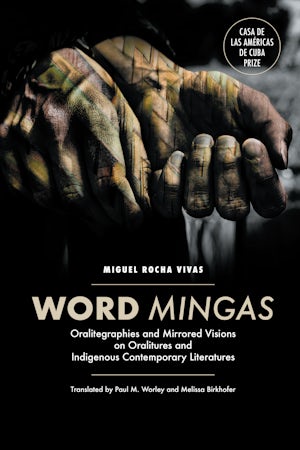
By Miguel Rocha Vivas. Translated by Paul M. Worley & Melissa Birkhofer
Word Mingas is an English-language translation by Paul M. Worley and Melissa Birkhofer of the award-winning book Mingas de la palabra written by Miguel Rocha Vivas (Casa de las Américas, 2016). It is an encompassing study of oralitures–multilayered cultural knowledge shared through the power of orality–and written literatures by authors from Colombia and other regions in the hemisphere who self-identify as Indigenous. In consequential dialogue with the most recent theories of decoloniality and interculturality, the book weaves and compares two threads of literary critique Rocha Vivas names as oralitegraphies and mirrored visions. The study focuses on texts produced from the early 1990s to the present, and offers productive avenues to discuss, understand, and foster dialogue with the wide array of symbolic-literary systems of the original peoples. Rocha Vivas offers a valuable contribution to the much-needed dialogue on the basic rights of self-representation, self-determination, and the coexistence of multiple systems of representation and identity.

By Inca Garcilaso de la Vega. Edited by José Miguel Martínez Torrejón
En el largo y sinuoso proceso que condujo a la publicación de La Florida del Inca (Lisboa, 1605) podemos suponer la existencia de varios pre-textos: copias manuscritas de versiones preliminares o parciales. Se publican aquí, en ediciones críticas y con un estudio histórico-filológico, los únicos documentos conocidos hasta ahora: dos resúmenes realizados a partir de la obra ya terminada pero aún manuscrita (c. 1596-1600); dos testimonios de muy distinta naturaleza y de pareja importancia, por cuanto amplían el ya complejo relato de cómo lo que podría haber sido una escueta relación histórica llegó a ser la obra clásica de 1605 y perfilan mejor los avatares de una carrera literaria sujeta a las servidumbres del mecenazgo y la política.
El Epítome del descubrimiento de la tierra de la Florida procede de un manuscrito recientemente descubierto en la Hispanic Society of America, de Nueva York. Se trata de un resumen dictado a un amanuense por el propio Garcilaso poco después de 1596, cuando las posibilidades de publicar su obra, terminada hacia 1592, se revelaban difíciles por falta de patronazgo político y económico.
El segundo texto, la Historia de los sucesos de la Florida del adelantado Hernando de Soto, es mucho más extenso que el anterior. El estudio de sus añadidos y errores muestra cómo no es una versión primitiva de La Florida, según se creía, sino un resumen preparado por el cronista Antonio de Herrera y Tordesillas a partir de una copia de la obra, con el objetivo de plagiar su contenido, algo que realmente hizo en sus Décadas (1615).
La presentación conjunta de ambos pre-textos es un hecho insólito en la historia literaria de la prosa en nuestra lengua y, más allá de la micro-historia de La Florida, viene a arrojar la luz sobre los complicados procesos de la publicación de nuestros clásicos. 
 Dissonances of Modernity: Music, Text, and Performance in Modern Spain
Dissonances of Modernity: Music, Text, and Performance in Modern Spain
Edited by Irene Gómez-Castellano & Aurélie Vialette
Dissonances of Modernity illuminates the ways in which music, as an artifact, a practice, and a discourse redefines established political, social, gender, and cultural conventions in Modern Spain. Using the notion of dissonance as a point of departure, the volume builds on the insightful approaches to the study of music and society offered by previous analyses in regards to the central position they give to identity as a socially and historically constructed concept, and continues their investigation on the interdependence of music and society in the Iberian Peninsula. While other serious studies of the intersections of music and literature in Spain have focused on contemporary usage, Dissonances of Modernity looks back across the centuries, seeking the role of music in the very formation of identity in the peninsula. The volume’s historical horizon reaches from the nineteenth-century War of Africa to the Catalan working class revolutions and Enric Granados’ central role in Catalan identity; from Francisco Barbieri’s Madrid to the Wagnerian’s influence in Benito Pérez Galdós’ prose; and from the predicaments surrounding national anthems to the use of the figure of Carmen in Francoist’ cinema. This volume is a timely scholarly addition that contemplates not only a broad corpus that innovatively comprises popular and high culture–zarzuelas, choruses of industrial workers, opera, national anthems–but also their inter-dependence in the artists’ creativity.


Narrating Desire. Moral Consolation and Sentimental Fiction in Fifteenth-Century Spain
By Sol Miguel-Prendes
Narrating Desire: Moral Consolation and Sentimental Fiction in Fifteenth-Century Spain proposes a new taxonomy and conceptual frame for the controversial Iberian genre of sentimental fiction. It traces its origin to late-medieval education in rhetoric, philosophy, and medicine as the foundation for virtuous living. In establishing the genre’s boundaries and cultural underpinnings, Narrating Desire emphasizes the crucial link between Eastern and Western Iberian sentimental traditions, and offers close readings of a vast array of Catalan and Castilian fictions, translations, narrative poems, letters, and doctrinal treatises: the Catalan translations of Boethius’s Consolation of Philosophy, Santillana’s El sueño, Bernat Metge’s Lo somni, Romeu Llull’s Lo despropiament d’amor, Pedro Moner’s La noche and L’anima d’Oliver, Rodríguez del Padrón’s Siervo libre de amor, Carrós Pardo de la Casta’s Regoneixença, Roís de Corella’s Parlament and Tragèdia de Caldesa, Pedro de Portugal’s Sátira, Francesc Alegre’s Somni and Raonament, Pere Torroella’s correspondence, and the well-known works by Diego de San Pedro (Arnalte y Lucenda; Cárcel de Amor) and Juan de Flores (Grisel y Mirabella; Grimalte y Gradissa) among others. From them, Miguel-Prendes singles out a group of dream visions whose interpretive and compositional practices sire the sentimental genre. Social interactions lead to either a consolatory or a sentimental form, which imply very different ways of seeing: the allegorical gaze of consolation gives way to narrative fiction. In distorting moral conversion, the sentimental genre heralds the novel.

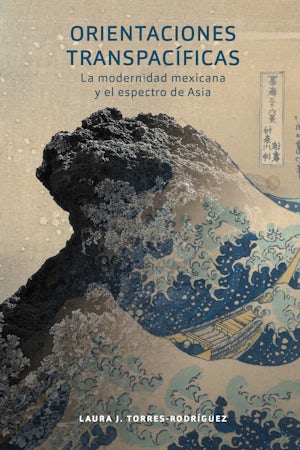
Orientaciones transpacíficas. La modernidad mexicana y el espectro de Asia
By Laura J. Torres-Rodríguez
Orientaciones transpacíficas is a wide-ranging study that presents a cross-temporal examination of the discernible orientation toward East and South Asia that pervades the work of well-known intellectual and artistic Mexican figures. It goes from the later years of the regime of Porfirio Díaz in the 1900s to the cultural imaginaries of nationalism in the 1920s, and from the Cold War to the global spread of neoliberalism at the turn of the new century. Understanding Orientalism as a form of situated and historical orientation grounded in Mexico’s own (post)colonial formation, the book argues that, although after its independence Mexico’s important commercial connection with the Asian continent became attenuated, East and South Asia continued to be a crucial point of reference for Mexico to assert global centrality and to anchor discourses of cultural singularity or political exception.
By tracing the intellectual turn to Asia in José Juan Tablada’s travel narratives and art essays, Manuel Alvarez Bravo’s photography landscapes, José Vasconcelos’s writing about mestizaje and in his literacy campaigns, Roger Bartra’s Marxist political economy writings, Rafael Bernal’s hard-boiled novel, Marcela Rodríguez and Mario Bellatin’s musical composition in Ciudad Juárez, and Shinpei Takeda’s art installations in Tijuana, the book recasts the colonial emphasis on a transatlantic relationship with Europe and displays a transpacific and planetary imagination–eschewing the Atlantic dialectic between ex-colony and metropole–that defined Mexican conceptualizations of literary and cultural modernity. Thus, Orientaciones transpacíficas shows that Mexican orientalism played an instrumental (though often unremarked) role in the cultural definitions that became fundamental to the field of Mexican and Latin American Studies, such as the notion of hybrid modernity (in racial, aesthetic, economic, or temporal terms).
By N. Michelle Murray
Home Away from Home: Immigrant Narratives, Domesticity, and Coloniality in Contemporary Spanish Culture examines ideological, emotional, economic, and cultural phenomena brought about by migration through readings of works of literature and film featuring domestic workers. In the past thirty years, Spain has experienced a massive increase in immigration. Since the 1990s, immigrants have been increasingly female, as bilateral trade agreements, migration quotas, and immigration policies between Spain and its former colonies (including the Dominican Republic, Ecuador, Equatorial Guinea, and the Philippines) have created jobs for foreign women in the domestic service sector. These migrations reveal that colonial histories continue to be structuring elements of Spanish national culture, even in a democratic era in which its former colonies are now independent. Migration has also transformed the demographic composition of Spain and has created complex new social relations around the axes of gender, race, and nationality. Representations of migrant domestic workers provide critical responses to immigration and its feminization, alongside profound engagements with how the Spanish nation has changed since the end of the Franco era in 1975. Throughout Home Away from Home, readings of works of literature and film show that texts concerning the transnational nature of domestic work uniquely provide a nuanced account of the cultural shifts occurring in late twentieth- through twenty-first-century Spain.
By José Manuel Pereiro Otero
The abolition of judicial torture—alongside the eradication of both slavery and capital punishment—was one of the most consequential issues debated in eighteenth-century continental Europe. A revealing component of this controversial debate was presented in the unpublished “Discurso sobre la injusticia del apremio judicial,” written by the attorney Pedro García del Cañuelo. Seeking support for its publication, he forwarded the manuscript to Prime Minister Manuel Godoy in 1795. The savvy Spanish politician, however, not only rejected the text but also warned its author against further discussing the issues raised in his treatise. As a result, although its title was known, the essay was lost to history.
The current volume, La abolición del tormento, analyzes, transcribes, and reproduces the complete “Discurso” while framing its proposals within the European debate regarding the abolition of torture and the prohibition of other methods of mental and physical coercion allowed by diverse tribunals. The monograph additionally considers the extent of the controversy associated with torture in Spain as it provides biographical information on García del Cañuelo and examines the philosophical and juridical foundations related to this atrocious practice, one which produced one of the fiercest exchanges of the Enlightenment. The aforementioned dispute reflects the political tensions of an era because a discussion on the legality of torture involves a consideration of what constitutes a human being, what is the relationship between legality and justice, and what are the limits of lawful power in relation to the natural rights and the intrinsic value of the individual. Thoroughly documented, this study should be of particular interest to those concerned with intellectual processes and practices during the modern era, not only in Spain, but throughout the Western world as a whole.

By Luis C. Cano
This book examines the development of Latin American science fiction from the mid-nineteenth century until the early days of Modernsmo via an in-depth discussion of the first three novels published in Spanish America: Viaje maravilloso del señor Nic-Nac al planeta Marte by Argentinian writer Eduardo Ladislao Holmberg, Desde Júpiter by the Chilean Francisco Miralles, and Querens by Pedro Castera from Mexico. These three novels incorporate all the attributes that consistently appear in a science fiction work through a blend of Darwinism and Spiritism, the two most dominant and widely-debated scientific discourses of their time. Consistent with the social and political interests in the recently independent Latin American nations, the three writers address scientific, aesthetic, intellectual and personal beliefs through a combination of utopian optimism and dystopian pragmatism.

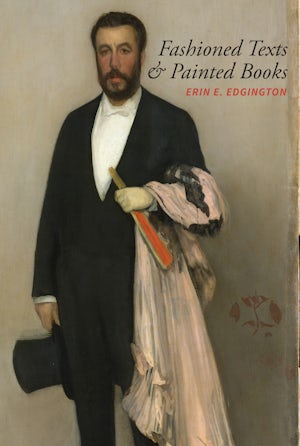 Fashioned Texts and Painted Books. Nineteenth-Century French Fan Poetry
Fashioned Texts and Painted Books. Nineteenth-Century French Fan Poetry
By Erin E. Edgington
Fashioned Texts and Painted Books examines the folding fan’s multiple roles in fin-de-siècle and early twentieth-century French literature. Focusing on the fan’s identity as a symbol of feminine sexuality, as a collectible art object, and, especially, as an alternative book form well suited to the reception of poetic texts, the study highlights the fan’s suitability as a substrate for verse, deriving from its myriad associations with coquetry and sex, flight, air, and breath. Close readings of Stéphane Mallarmé’s éventails of the 1880s and 1890s and Paul Claudel’s Cent phrases pour éventails (1927) consider both text and paratext as they underscore the significant visual interest of this poetry.
Works in prose and in verse by Octave Uzanne, Guy de Maupassant, and Marcel Proust, along with fan leaves by Edgar Degas, Édouard Manet, Berthe Morisot, and Paul Gauguin, serve as points of comparison that deepen our understanding of the complex interplay of text and image that characterizes this occasional subgenre. Through its interrogation of the correspondences between form and content in fan poetry, this study demonstrates that the fan was, in addition to being a ubiquitous fashion accessory, a significant literary and art historical object straddling the boundary between East and West, past and present, and high and low art.
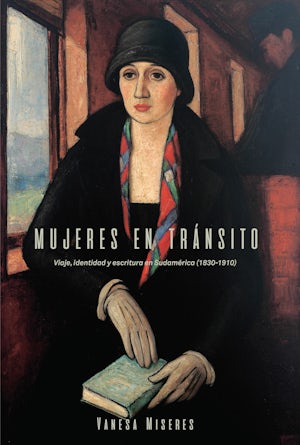 Mujeres en tránsito. Viaje, identidad y escritura en Sudamérica (1830-1910)
Mujeres en tránsito. Viaje, identidad y escritura en Sudamérica (1830-1910)
By Vanesa Miseres
Winner of the Premio Roggiano para la Crítica Literaria Latinoamericana 2018, awarded by the Instituto Internacional de Literatura Iberoamericana (IILI).
Mujeres en tránsito examines in detail the insightful accounts of four prominent female writers who traveled to and from Latin America in the nineteenth century: the French Peruvian socialist and activist Flora Tristan (1803-44), the Argentines Juana Manuela Gorriti (1816-92), Eduarda Mansilla (1834-92), and the Peruvian Clorinda Matto de Turner (1852-1909). Each author traveled and wrote in different and significant moments in the history of the Latin American nations, and their texts touch upon the nature of hemispheric and European cross-cultural relations.
Mujeres en tránsito revises the limited consideration that women’s travelogues have received within the Latin American literary tradition. It demonstrates how women’s commentaries on their own and other nations speak to their own engagement in the project of modern citizenship. More importantly, the act of traveling often helps female authors challenge the strictly political, legal, and geographic conceptions of nationhood and national identity articulated in canonical texts. Their improved yet marginal position in society as women, their particular reasons to travel, and the personal and symbolic connections with more than one nation or culture lead these four women to articulate a “transnational imaginary” through which they revise the categories of gender, class, modernity, and cultural homogeneity that shaped nineteenth century Latin American societies.

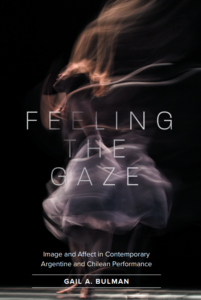
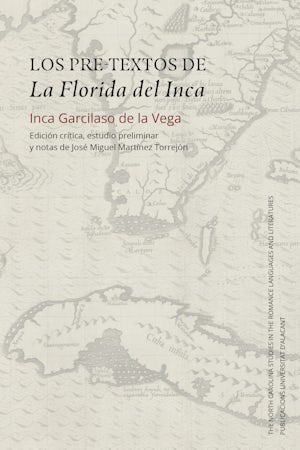 Los pre-textos de La Florida del Inca. Edición crítica, estudio preliminar y notas de José Miguel Martínez Torrejón
Los pre-textos de La Florida del Inca. Edición crítica, estudio preliminar y notas de José Miguel Martínez Torrejón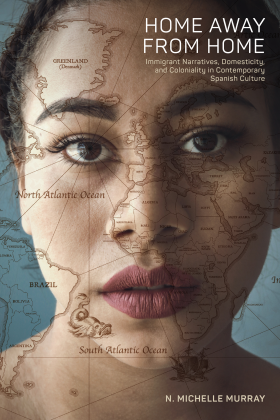 Home Away from Home: Immigrant Narratives, Domesticity, and Coloniality in Contemporary Spanish Culture
Home Away from Home: Immigrant Narratives, Domesticity, and Coloniality in Contemporary Spanish Culture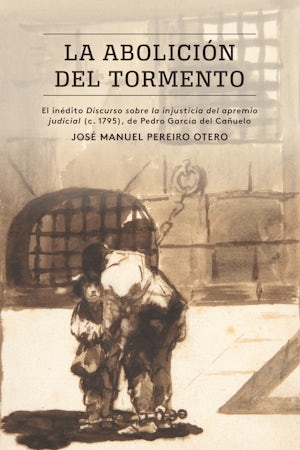 La abolición del tormento. El inédito Discurso sobre la injusticia del apremio judicial (c. 1795), de Pedro García del Cañuelo
La abolición del tormento. El inédito Discurso sobre la injusticia del apremio judicial (c. 1795), de Pedro García del Cañuelo